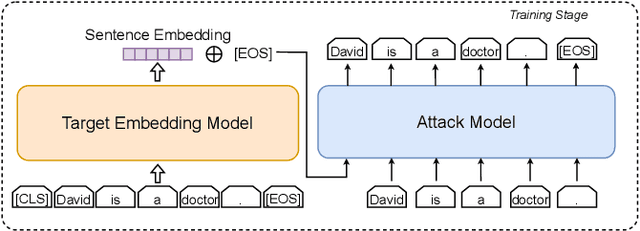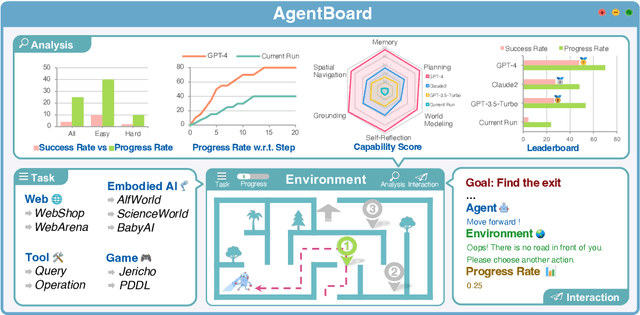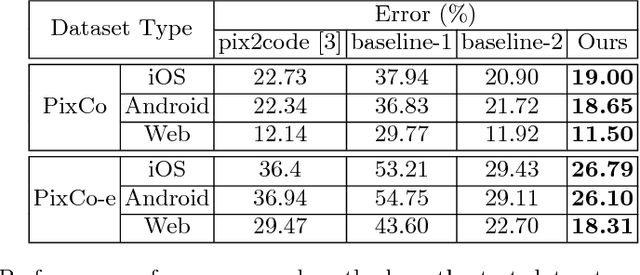Zhihao Zhu
Identifying Pre-training Data in LLMs: A Neuron Activation-Based Detection Framework
Jul 22, 2025Abstract:The performance of large language models (LLMs) is closely tied to their training data, which can include copyrighted material or private information, raising legal and ethical concerns. Additionally, LLMs face criticism for dataset contamination and internalizing biases. To address these issues, the Pre-Training Data Detection (PDD) task was proposed to identify if specific data was included in an LLM's pre-training corpus. However, existing PDD methods often rely on superficial features like prediction confidence and loss, resulting in mediocre performance. To improve this, we introduce NA-PDD, a novel algorithm analyzing differential neuron activation patterns between training and non-training data in LLMs. This is based on the observation that these data types activate different neurons during LLM inference. We also introduce CCNewsPDD, a temporally unbiased benchmark employing rigorous data transformations to ensure consistent time distributions between training and non-training data. Our experiments demonstrate that NA-PDD significantly outperforms existing methods across three benchmarks and multiple LLMs.
Salient Temporal Encoding for Dynamic Scene Graph Generation
Mar 15, 2025Abstract:Representing a dynamic scene using a structured spatial-temporal scene graph is a novel and particularly challenging task. To tackle this task, it is crucial to learn the temporal interactions between objects in addition to their spatial relations. Due to the lack of explicitly annotated temporal relations in current benchmark datasets, most of the existing spatial-temporal scene graph generation methods build dense and abstract temporal connections among all objects across frames. However, not all temporal connections are encoding meaningful temporal dynamics. We propose a novel spatial-temporal scene graph generation method that selectively builds temporal connections only between temporal-relevant objects pairs and represents the temporal relations as explicit edges in the scene graph. The resulting sparse and explicit temporal representation allows us to improve upon strong scene graph generation baselines by up to $4.4\%$ in Scene Graph Detection. In addition, we show that our approach can be leveraged to improve downstream vision tasks. Particularly, applying our approach to action recognition, shows 0.6\% gain in mAP in comparison to the state-of-the-art
TDDBench: A Benchmark for Training data detection
Nov 05, 2024



Abstract:Training Data Detection (TDD) is a task aimed at determining whether a specific data instance is used to train a machine learning model. In the computer security literature, TDD is also referred to as Membership Inference Attack (MIA). Given its potential to assess the risks of training data breaches, ensure copyright authentication, and verify model unlearning, TDD has garnered significant attention in recent years, leading to the development of numerous methods. Despite these advancements, there is no comprehensive benchmark to thoroughly evaluate the effectiveness of TDD methods. In this work, we introduce TDDBench, which consists of 13 datasets spanning three data modalities: image, tabular, and text. We benchmark 21 different TDD methods across four detection paradigms and evaluate their performance from five perspectives: average detection performance, best detection performance, memory consumption, and computational efficiency in both time and memory. With TDDBench, researchers can identify bottlenecks and areas for improvement in TDD algorithms, while practitioners can make informed trade-offs between effectiveness and efficiency when selecting TDD algorithms for specific use cases. Our large-scale benchmarking also reveals the generally unsatisfactory performance of TDD algorithms across different datasets. To enhance accessibility and reproducibility, we open-source TDDBench for the research community.
Understanding Privacy Risks of Embeddings Induced by Large Language Models
Apr 25, 2024



Abstract:Large language models (LLMs) show early signs of artificial general intelligence but struggle with hallucinations. One promising solution to mitigate these hallucinations is to store external knowledge as embeddings, aiding LLMs in retrieval-augmented generation. However, such a solution risks compromising privacy, as recent studies experimentally showed that the original text can be partially reconstructed from text embeddings by pre-trained language models. The significant advantage of LLMs over traditional pre-trained models may exacerbate these concerns. To this end, we investigate the effectiveness of reconstructing original knowledge and predicting entity attributes from these embeddings when LLMs are employed. Empirical findings indicate that LLMs significantly improve the accuracy of two evaluated tasks over those from pre-trained models, regardless of whether the texts are in-distribution or out-of-distribution. This underscores a heightened potential for LLMs to jeopardize user privacy, highlighting the negative consequences of their widespread use. We further discuss preliminary strategies to mitigate this risk.
AgentBoard: An Analytical Evaluation Board of Multi-turn LLM Agents
Jan 24, 2024



Abstract:Evaluating large language models (LLMs) as general-purpose agents is essential for understanding their capabilities and facilitating their integration into practical applications. However, the evaluation process presents substantial challenges. A primary obstacle is the benchmarking of agent performance across diverse scenarios within a unified framework, especially in maintaining partially-observable environments and ensuring multi-round interactions. Moreover, current evaluation frameworks mostly focus on the final success rate, revealing few insights during the process and failing to provide a deep understanding of the model abilities. To address these challenges, we introduce AgentBoard, a pioneering comprehensive benchmark and accompanied open-source evaluation framework tailored to analytical evaluation of LLM agents. AgentBoard offers a fine-grained progress rate metric that captures incremental advancements as well as a comprehensive evaluation toolkit that features easy assessment of agents for multi-faceted analysis through interactive visualization. This not only sheds light on the capabilities and limitations of LLM agents but also propels the interpretability of their performance to the forefront. Ultimately, AgentBoard serves as a significant step towards demystifying agent behaviors and accelerating the development of stronger LLM agents.
Model Stealing Attack against Recommender System
Dec 26, 2023Abstract:Recent studies have demonstrated the vulnerability of recommender systems to data privacy attacks. However, research on the threat to model privacy in recommender systems, such as model stealing attacks, is still in its infancy. Some adversarial attacks have achieved model stealing attacks against recommender systems, to some extent, by collecting abundant training data of the target model (target data) or making a mass of queries. In this paper, we constrain the volume of available target data and queries and utilize auxiliary data, which shares the item set with the target data, to promote model stealing attacks. Although the target model treats target and auxiliary data differently, their similar behavior patterns allow them to be fused using an attention mechanism to assist attacks. Besides, we design stealing functions to effectively extract the recommendation list obtained by querying the target model. Experimental results show that the proposed methods are applicable to most recommender systems and various scenarios and exhibit excellent attack performance on multiple datasets.
Model Stealing Attack against Graph Classification with Authenticity, Uncertainty and Diversity
Dec 26, 2023Abstract:Recent research demonstrates that GNNs are vulnerable to the model stealing attack, a nefarious endeavor geared towards duplicating the target model via query permissions. However, they mainly focus on node classification tasks, neglecting the potential threats entailed within the domain of graph classification tasks. Furthermore, their practicality is questionable due to unreasonable assumptions, specifically concerning the large data requirements and extensive model knowledge. To this end, we advocate following strict settings with limited real data and hard-label awareness to generate synthetic data, thereby facilitating the stealing of the target model. Specifically, following important data generation principles, we introduce three model stealing attacks to adapt to different actual scenarios: MSA-AU is inspired by active learning and emphasizes the uncertainty to enhance query value of generated samples; MSA-AD introduces diversity based on Mixup augmentation strategy to alleviate the query inefficiency issue caused by over-similar samples generated by MSA-AU; MSA-AUD combines the above two strategies to seamlessly integrate the authenticity, uncertainty, and diversity of the generated samples. Finally, extensive experiments consistently demonstrate the superiority of the proposed methods in terms of concealment, query efficiency, and stealing performance.
C-Eval: A Multi-Level Multi-Discipline Chinese Evaluation Suite for Foundation Models
May 17, 2023



Abstract:New NLP benchmarks are urgently needed to align with the rapid development of large language models (LLMs). We present C-Eval, the first comprehensive Chinese evaluation suite designed to assess advanced knowledge and reasoning abilities of foundation models in a Chinese context. C-Eval comprises multiple-choice questions across four difficulty levels: middle school, high school, college, and professional. The questions span 52 diverse disciplines, ranging from humanities to science and engineering. C-Eval is accompanied by C-Eval Hard, a subset of very challenging subjects in C-Eval that requires advanced reasoning abilities to solve. We conduct a comprehensive evaluation of the most advanced LLMs on C-Eval, including both English- and Chinese-oriented models. Results indicate that only GPT-4 could achieve an average accuracy of over 60%, suggesting that there is still significant room for improvement for current LLMs. We anticipate C-Eval will help analyze important strengths and shortcomings of foundation models, and foster their development and growth for Chinese users.
Resisting Graph Adversarial Attack via Cooperative Homophilous Augmentation
Nov 15, 2022



Abstract:Recent studies show that Graph Neural Networks(GNNs) are vulnerable and easily fooled by small perturbations, which has raised considerable concerns for adapting GNNs in various safety-critical applications. In this work, we focus on the emerging but critical attack, namely, Graph Injection Attack(GIA), in which the adversary poisons the graph by injecting fake nodes instead of modifying existing structures or node attributes. Inspired by findings that the adversarial attacks are related to the increased heterophily on perturbed graphs (the adversary tends to connect dissimilar nodes), we propose a general defense framework CHAGNN against GIA through cooperative homophilous augmentation of graph data and model. Specifically, the model generates pseudo-labels for unlabeled nodes in each round of training to reduce heterophilous edges of nodes with distinct labels. The cleaner graph is fed back to the model, producing more informative pseudo-labels. In such an iterative manner, model robustness is then promisingly enhanced. We present the theoretical analysis of the effect of homophilous augmentation and provide the guarantee of the proposal's validity. Experimental results empirically demonstrate the effectiveness of CHAGNN in comparison with recent state-of-the-art defense methods on diverse real-world datasets.
Automatic Graphics Program Generation using Attention-Based Hierarchical Decoder
Oct 26, 2018



Abstract:Recent progress on deep learning has made it possible to automatically transform the screenshot of Graphic User Interface (GUI) into code by using the encoder-decoder framework. While the commonly adopted image encoder (e.g., CNN network), might be capable of extracting image features to the desired level, interpreting these abstract image features into hundreds of tokens of code puts a particular challenge on the decoding power of the RNN-based code generator. Considering the code used for describing GUI is usually hierarchically structured, we propose a new attention-based hierarchical code generation model, which can describe GUI images in a finer level of details, while also being able to generate hierarchically structured code in consistency with the hierarchical layout of the graphic elements in the GUI. Our model follows the encoder-decoder framework, all the components of which can be trained jointly in an end-to-end manner. The experimental results show that our method outperforms other current state-of-the-art methods on both a publicly available GUI-code dataset as well as a dataset established by our own.
 Add to Chrome
Add to Chrome Add to Firefox
Add to Firefox Add to Edge
Add to Edge